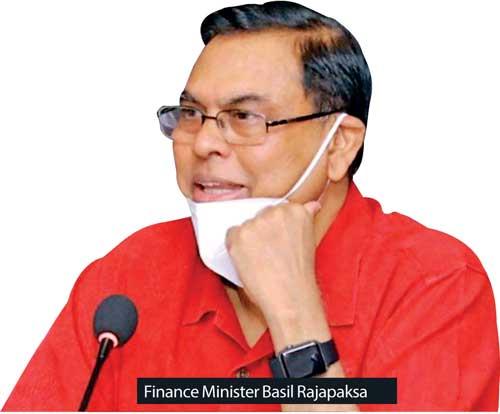15 Oct 2021 - {{hitsCtrl.values.hits}}
As the government is dealing with some strenuous fiscal conditions amid the steep loss of revenues inflicted by the prolonged pandemic, it has resorted to some sizeable spending cuts on social and welfare expenditure as well as capital expenditure for 2022, as the government kicked off the budget process for the next year with the tabling of the Appropriation Bill last week.
 However, the personnel heavy ministries such as Finance, Public Services, Provincial Councils and Local Government and Defence have received a boost in their allocations as the government operates with a heavier State sector, and the defence budget has got additional funding, according to ICRA Lanka Limited.
However, the personnel heavy ministries such as Finance, Public Services, Provincial Councils and Local Government and Defence have received a boost in their allocations as the government operates with a heavier State sector, and the defence budget has got additional funding, according to ICRA Lanka Limited.
The government earlier indicated that it would cut down significantly on non-essential expenditure at all State institutions under ministries, take a thorough look at the welfare spending and suspend any new recruitments to the public service in what looked like self imposed austerity measures to bridge the bloated fiscal deficit and to cut down on public debt, which has reached unsustainable levels.
According to a note issued by ICRA Lanka Limited this week on spending allocations for each spending unit, the government had made good on these measures by making, “sizable cuts in allocations”, to welfare and social spending, as the related ministries have seen their allocations being curtailed by Rs.10 billion for next year.
While the welfare and social spending by way of transfers are crucial to support the sections of the population who lost incomes and were plunged into poverty due to pandemic-induced restriction, such spending must be highly targeted to make the most of such moneys amid the tight revenue conditions, according to the International Monetary Fund and other economic analysts.
Sri Lanka last week presented the Appropriation Bill to Parliament with total estimated expenditure for 2022 at Rs.4 trillion, which marked a marginal Rs.30 billion decline from the approved allocations for 2021, ICRA Lanka, which parsed the first and the second schedule of the bill, said.
However, that reduction has come at the expense of a 20 percent cut in capital expenditure allocated for next year. At a time when the economy is gravely beset by the pandemic and has been on an anaemic growth path for six years since 2016, the significance of capital expenditure could not be stressed more as such expenditure is crucial in laying the ground work for faster economic take off in the future.
For instance, capital heavy ministries such as highways and water supply, which typically carry the heaviest capex allocations, have seen cuts to the tune of Rs.100 billion and Rs.69 billion each next year.
While the government allocation will see a short term cut, such projects predominantly happen through foreign funding from various multilateral funders such as the World Bank and the Asian Development Bank and the likes.
However, the aforementioned ministries with large workforces together received a Rs.214 boost to their recurrent expenditure allocation for 2022.
Meanwhile, in line with the expectations on the current pandemic and its containment efforts, the allocation on overall health rose by Rs.7.0 billion from 2021 levels with two traditional ministries related to health getting a total allocation of Rs.156 billion in 2022. The additional allocations are for the State Ministry of Primary Health Care, Epidemics and COVID-19 Disease Control.
Education got an allocation of Rs.128 billion for 2022, marginal expansion of 1 percent from 2021, but the aggregate allocation for all education related ministries contracted by over Rs.6 billion or 4 percent.
17 Nov 2024 5 hours ago
17 Nov 2024 6 hours ago
17 Nov 2024 8 hours ago
17 Nov 2024 8 hours ago
17 Nov 2024 9 hours ago